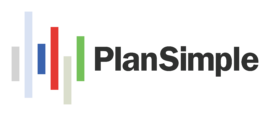With the new mandatory auto-enrollment rules taking effect in 2025, employers need to understand the details of how these changes will impact 401(k) and 403(b) plans. The regulations set specific contribution requirements while allowing employees the flexibility to adjust or opt out. Here’s what you need to know about contribution structures, withdrawal options, and compliance requirements.
Understanding Automatic Contributions
Under the new rules, all eligible employees must be automatically enrolled in the retirement plan at a default contribution rate. The key details of this requirement include:
- The initial default contribution rate must be between 3% and 10% of an employee’s compensation.
- The default rate must increase by 1% each year until reaching a minimum of 10% and a maximum of 15%.
- Employees retain the right to adjust their contribution rate or opt out of the plan entirely.
Employers must ensure their payroll and HR systems are set up to apply these automatic increases correctly.
Employee Opt-Out and Contribution Adjustments
While auto-enrollment aims to boost participation in retirement savings, employees are not locked into the default contribution rate.
- Employees can opt out of the plan if they do not wish to contribute.
- They can also change their contribution percentage at any time to fit their financial goals.
- Plans must provide clear communication and easy access for employees to make these adjustments.
Permissible Withdrawals and Refunds
To offer additional flexibility, the regulations allow for permissible withdrawals in certain situations. This means that employees who are automatically enrolled but do not want to participate can request a refund of their contributions.
- Employees typically have 90 days from the first contribution to request a withdrawal.
- Withdrawn funds are returned to the employee without penalty, but any investment gains or losses may still apply.
- Employers must outline the withdrawal process clearly in their plan documents and employee communications.
Compliance and Best Practices for Employers
To comply with these new regulations and ensure a smooth transition, employers should take the following steps:
- Review and update plan documents to align with the new contribution and withdrawal rules.
- Ensure payroll systems can handle automatic increases in contribution rates.
- Provide employees with clear and ongoing communication about their rights to adjust contributions or opt out.
- Work with a financial advisor or plan administrator to make sure your plan remains compliant.
Preparing for the Future
The goal of these new auto-enrollment rules is to increase retirement savings and make it easier for employees to participate in workplace retirement plans. By implementing these changes properly, employers can help their workforce secure a more stable financial future while ensuring compliance with the latest IRS regulations.
For more information on staying compliant with the SECURE 2.0 auto-enrollment rules, visit the IRS website or contact a retirement plan specialist for personalized guidance. Also remember that we’re here to help you with any questions you might have! CLICK HERE to make an appointment.

